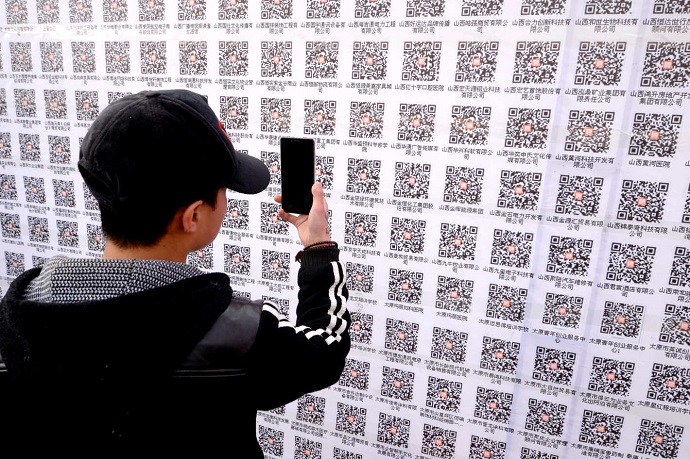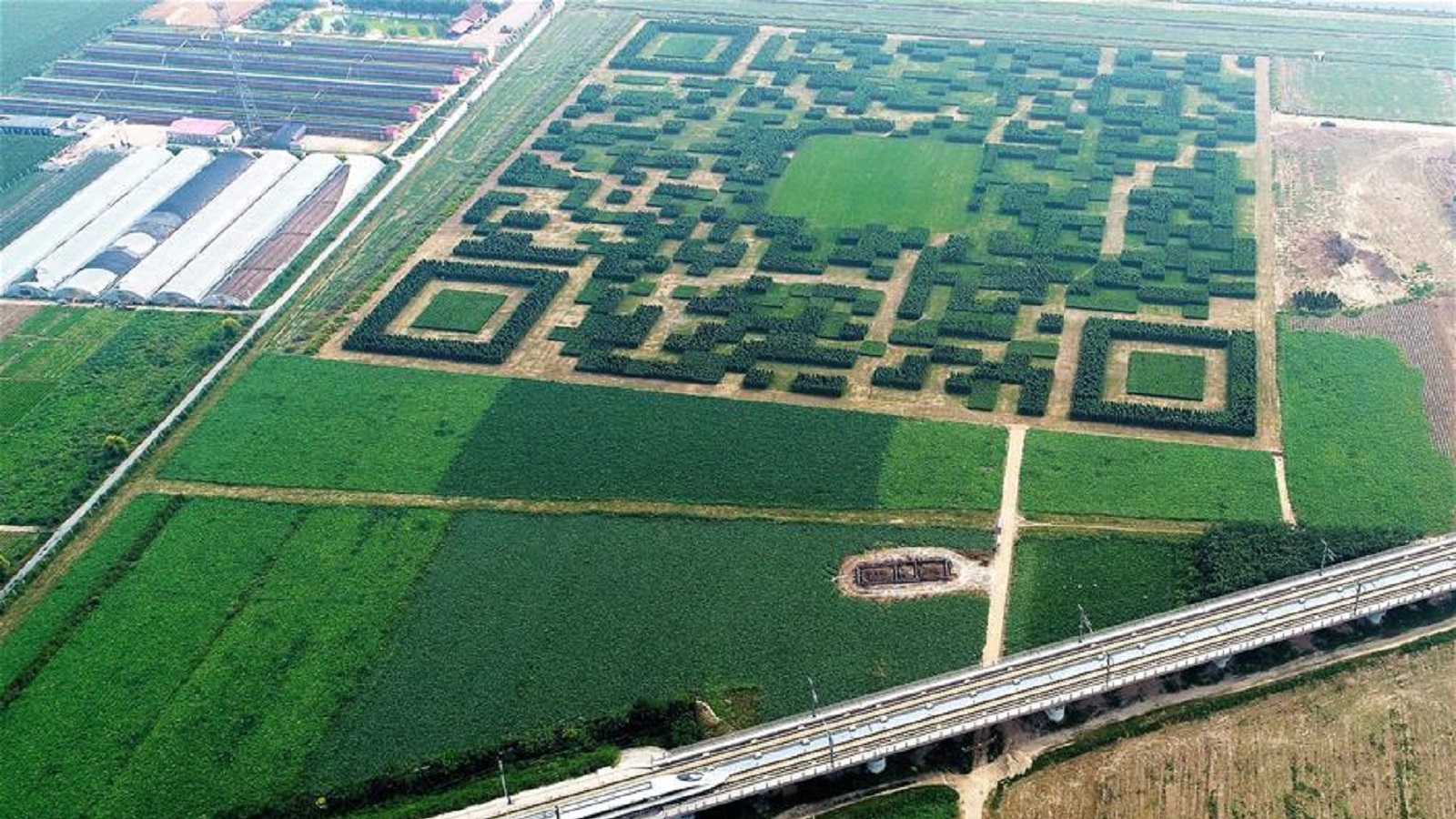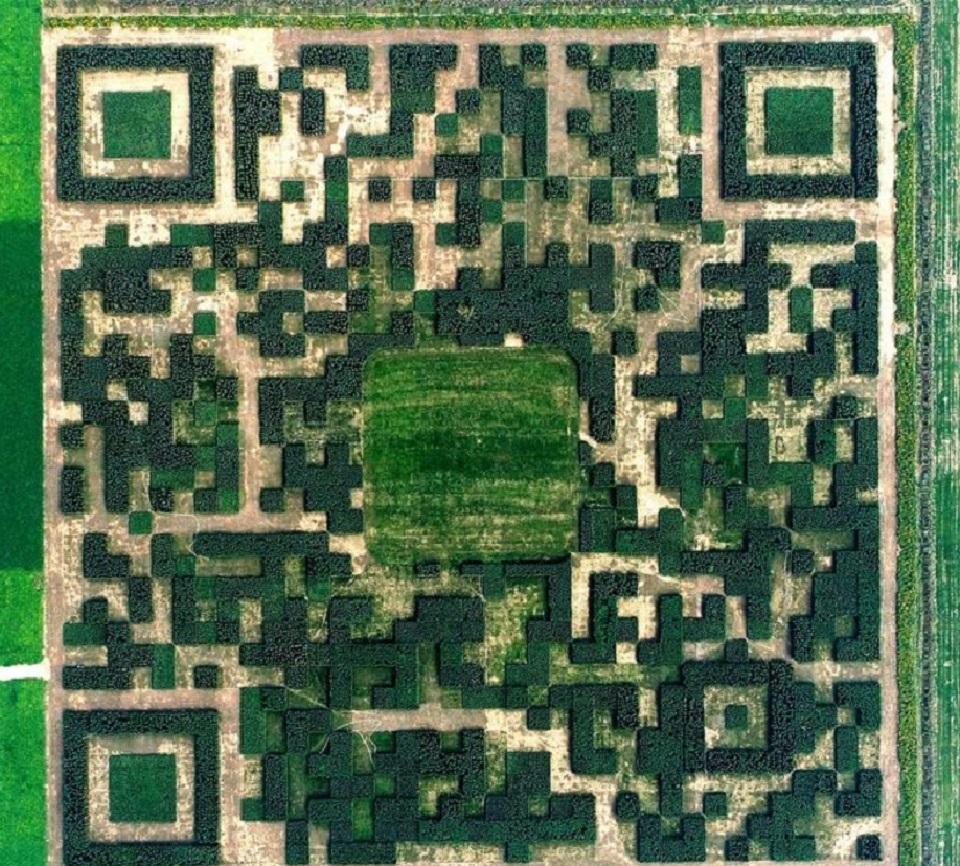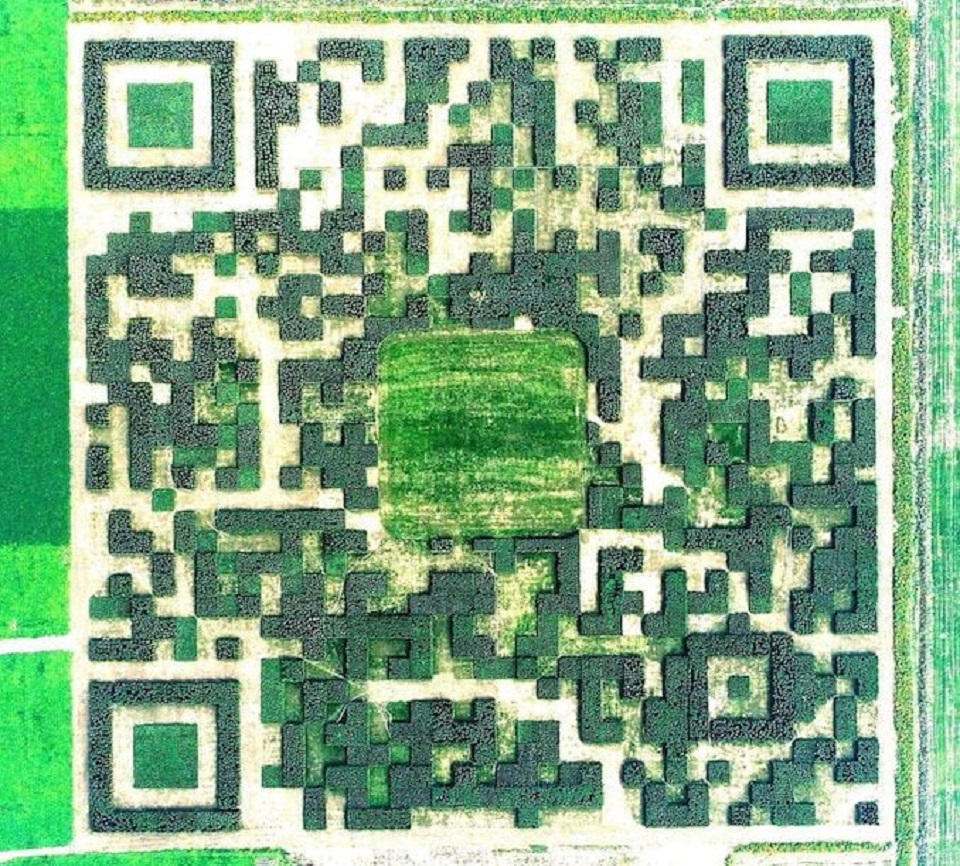QR codes have been in use since the early 2000s, but somehow, they are considered more or less irrelevant in Western cultures, with only 21% of Americans ever using such a code. These machine-readable symbols are still around, but unlike western consumers, Chinese people find them very handy. That’s why they have embraced them as a part of their daily lives.
Chinese use these optical labels in retail, street markets, and even when it comes to begging — that’s how ‘trendy’ they are. The popularity of such high-tech barcodes among the country’s citizens is unquestionable — they can be seen everywhere. And China decided to take its love for QR codes to another level. By building a mega-sized smart code to attract tourists. In an effort to boost local tourism, the Xilinshui Village, located in the northern Hebei province, used such a code to advertise its image at a larger scale. Seen from the ground, the touristic ‘promo board’ looks like a tree maze. But the moment you reach a certain height, you get to see the secret message encrypted within the massive labyrinth-like structure.
In an effort to boost local tourism, the Xilinshui Village, located in the northern Hebei province, used such a code to advertise its image at a larger scale. Seen from the ground, the touristic ‘promo board’ looks like a tree maze. But the moment you reach a certain height, you get to see the secret message encrypted within the massive labyrinth-like structure.
Using 130,000 Chinese juniper trees, the officials of the most beautiful village in Hebei created an unlikely QR code that covers an area of 6.7 hectares (about 16.5 acres). The interesting part is that the artistic code can only be deciphered from mid-air, using a smartphone or a tablet. This unusual way to scan a high-tech code gave birth to a series of jokes among internet users, who mocked the initiative with ridiculous comments on microblog Sina Weibo.
It is still unknown how the massive zigzag pattern will be scanned from above, but the generated global buzz certainly attracted the attention of the wider public.
Before flying over it, users need to know if the QR code really works. An aerial photo of the code might possess the key to that question. Some users observed that the original picture can be hard to scan, but it only works when brightened. Yet, we at Branding.news tried both pictures, and found out that the two-dimensional grid transforms into a real QR code either way — although the original image revealed the embedded caption after some more attempts. You can give it a go below!
Once scanned, the QR code finally directs users to Xilinshui’s official tourism page on WeChat, China’s most popular messaging app, and allows visitors to get all travel information they want.
This isn’t the only creative mega-structure the Chinese assembled lately. Not too long ago, the country built a solar farm shaped like a giant panda bear, in its way to make young people aware of clean energy. We can’t wait what the Chinese will come up with next! How about you?
Credits:
Images: Xinhuanet, DigitalTrends, New York Media


